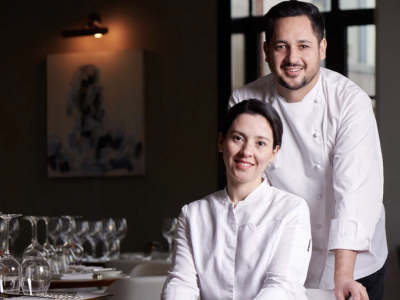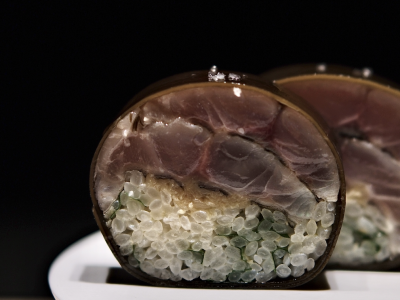Returning to Shanghai in the summer, my colleagues scattered across the world gathered to celebrate our company’s 10th anniversary. I wondered what could truly surprise their palates.
For the Western bistro, they chose Sage, but what about Chinese food? I wanted something unexpected, something magical that could charm even the pickiest foodies. That’s when “Oriental House” popped into my mind. The fishing season had just started in Taizhou—perfect timing for a visit.
@Jocelyn 華姐的TastyTrip YouTube
Oriental House’s off-menu offerings are legendary: some taste them, others envy them. The dishes immerse you completely, leaving your senses exhilarated and your eyes wide. I quickly reached out to Beiping, the owner, and to my relief, there was just one night left that month — since the restaurant only takes one booking for their off-menu per evening.
Over the years, every off-menu experience at Oriental House has been a crescendo of flavors, from subtle to grandiose.Beiping, one of the true gastronomes I know, was originally a clothing entrepreneur. His obsession with food is meticulous and experimental. The off-menu dishes are his laboratory of creativity. He has an uncanny ability to identify human desires and extract the most captivating aspects of ingredients, layering umami in ways that are flamboyant yet never vulgar. It’s like a Kung Fu technique known as ‘The Immortal Points the Way’—visually ornate yet graceful and effortless in execution.
That evening, we arrived at Oriental House in Pudong’s 96 Square for a remarkable dinner. The décor was as flamboyant as always, but our focus was entirely on the food.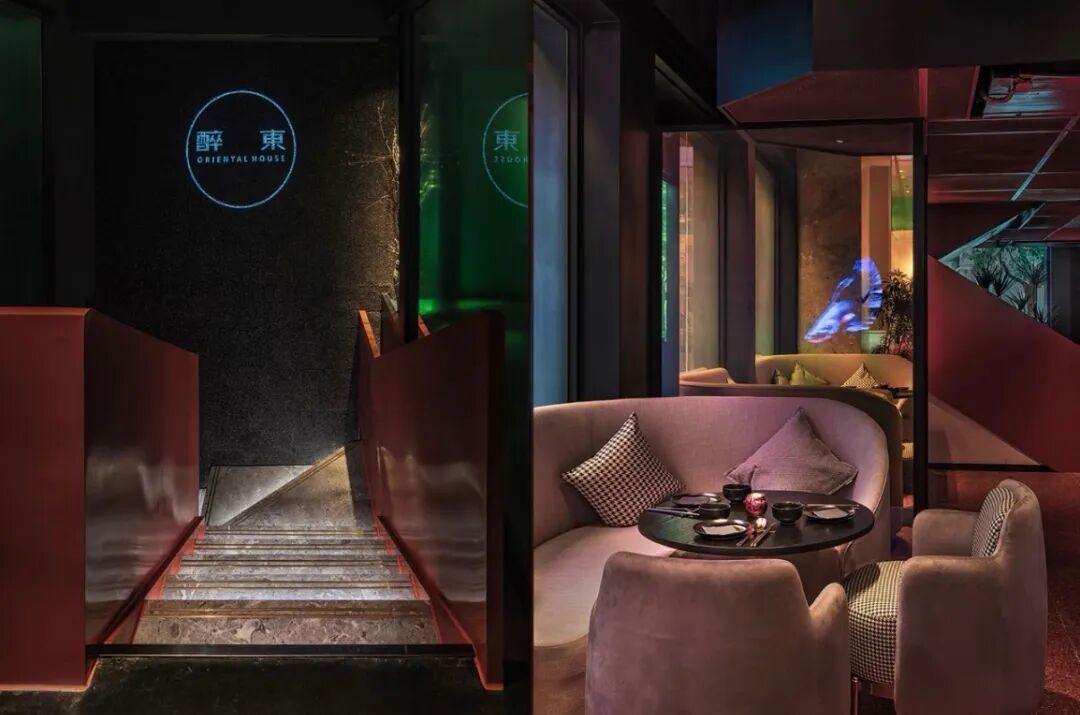 Oriental House in Pudong’s 96 Square
Oriental House in Pudong’s 96 Square
The meal began with traditionally stone-milled handmade tofu, paired with an individual dipping sauce of Yunnan May Chang (A fragrant spice from a small citrus-like fruit) and termite mushroom. The ginger aroma and subtle spiciness, with a hint of Southeast Asian influence, perfectly complemented the tofu. This was the essence of ingredient optimization—selecting the finest produce to highlight its fullest potential.
Next, Steamed Bun Slices with Fish Liver Pâté and Onion. Thinly sliced buns from Qingdao were lightly toasted to a delicate crisp, exuding a warm wheaty aroma. White onions from Xinjiang—pure, sweet, and mild compared to southern varieties. The rich fish liver pâté, made from crushed tuna and roasted pork liver, was devilishly indulgent. Whipped with olive oil and lightly scented with basil, it was the perfect accompaniment to drinks—a nod to Oriental House’s original location on Anfu Road, the pioneer of Shanghai-style Chinese taverns.
 Steamed Bun Slices with Fish Liver Pâté and Onion
Steamed Bun Slices with Fish Liver Pâté and Onion
Then came Deep-Fried Tilefish, with firm, oily flesh and a golden crispy exterior. Paired with olive vegetable and ling yu sauce, the dish offered dual layers of umami: first the pure flavor, then enhanced by the sauce. Beiping’s inspiration for the olive sauce came from his travels in Italy, adding an exotic twist to a familiar fried fish.
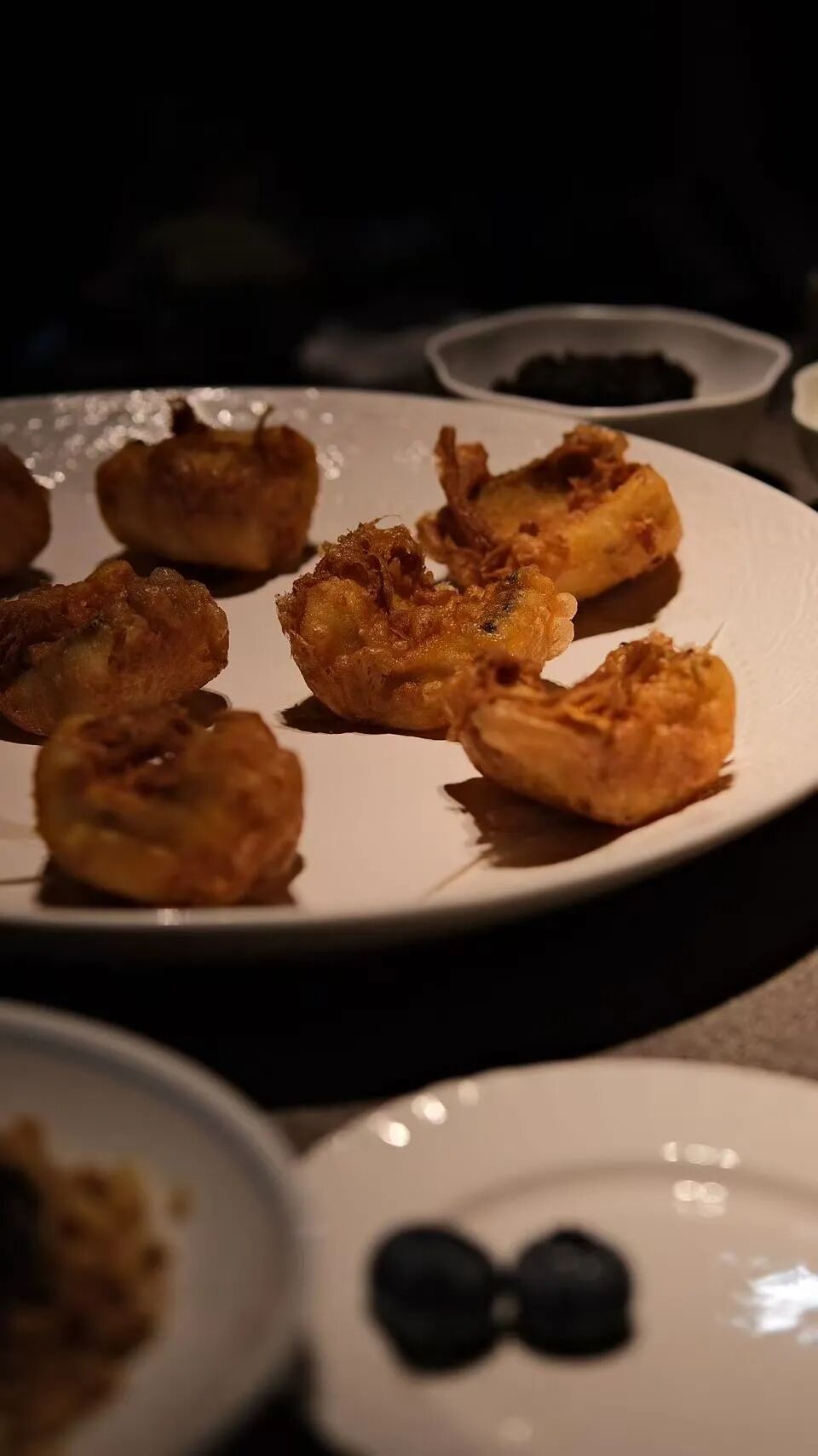 Deep-Fried Tilefish
Deep-Fried Tilefish
Braised Soft-Shell Crab with Luffa Gourd was served with the ingredients presented in a bamboo basket first. The plump crab gleamed bronze, perfectly cleaned, while the luffa gourd was a jade-white variety unique to the Zhejiang coast. Once brought back to the table, the clear gourd soup enveloped the crab meat, which burst with delicate freshness with each bite.
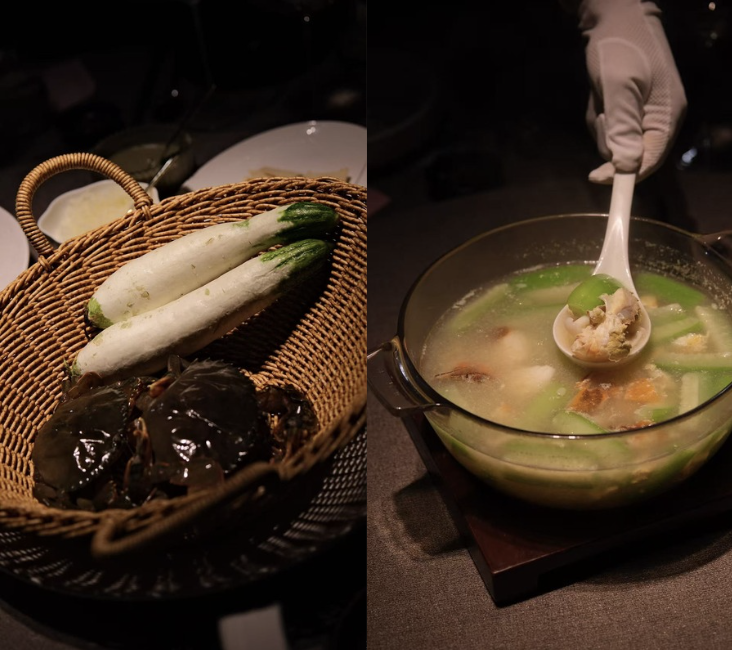 Braised Soft-Shell Crab with Luffa Gourd
Braised Soft-Shell Crab with Luffa Gourd
Next, Steamed Shrimp, featuring white-haired shrimp from shallow waters along the Zhejiang coast. The shrimp were neatly arranged, their shells a soft pink-orange hue, steamed directly in bamboo baskets to preserve their pure aroma.
Steamed Stone Ear Mushroom with Pork and Edamame highlighted “snowflake pork,” a tiny cut of meat with exquisite marbling. Paired with wild stone ear mushrooms and fresh edamame, it offered a subtle earthy fragrance and a delicate, chewy texture—simple yet extraordinary.
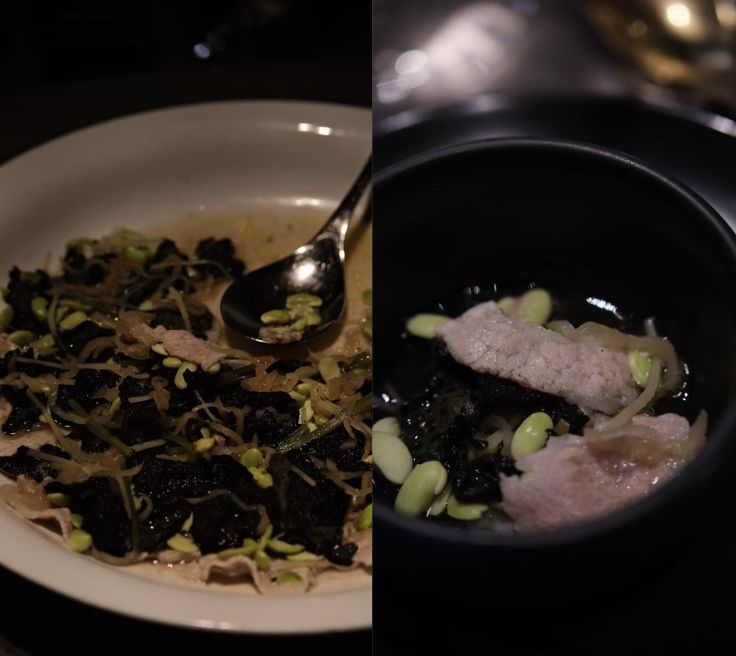 Steamed Stone Ear Mushroom with Pork and Edamame
Steamed Stone Ear Mushroom with Pork and Edamame
For Butter Curry-Braised Pomfret, the slow-growing, rare pomfret was perfectly sized and uniform in shape—a stroke of luck. Traditionally a Sichuan-Chongqing dry-braising technique, the dish was reinterpreted with local flavors, enriched with butter, curry, and coconut milk. The vibrant yellow sauce enveloped the tender fish, a perfect fusion of Southeast Asian warmth and Sichuan intensity, best enjoyed with carefully selected mineral water rice.
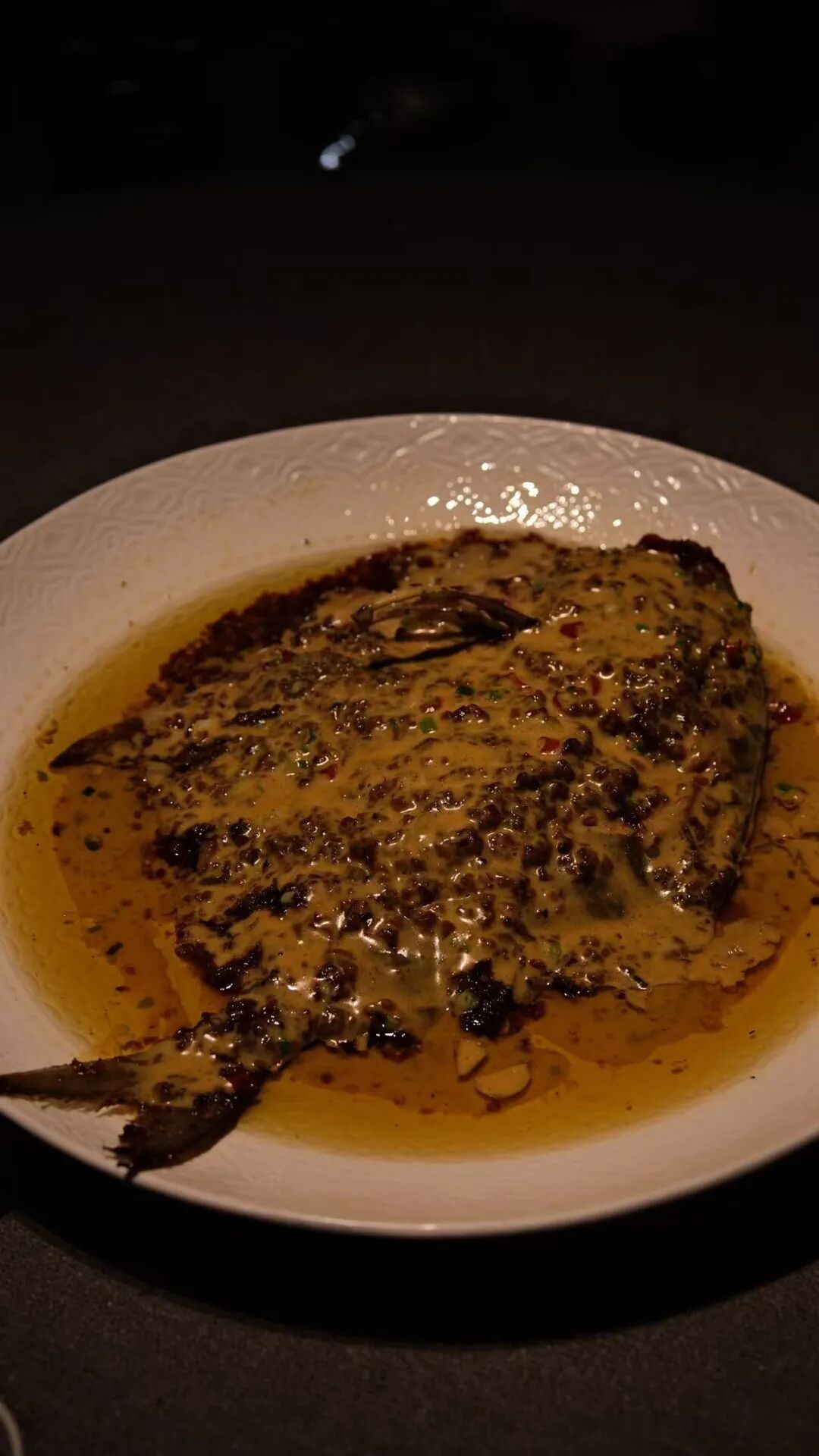 Butter Curry-Braised Pomfret
Butter Curry-Braised Pomfret
Stir-Fried Blue Crab with Rice Cakes celebrated the seasonal bounty of August at the Yangtze estuary. The plump crabs, glossy shells, and rich roe harmonized with springy Ningbo rice cakes, each bite infused with succulent crab essence.
Sea Anemone and Fish Maw featured wild, thick-textured sand garlic and fresh male carp fish maw. Combined with a rich soybean base, the dish was unexpectedly harmonious—the chewy fish maw and crunchy sand garlic working together like kindred spirits.
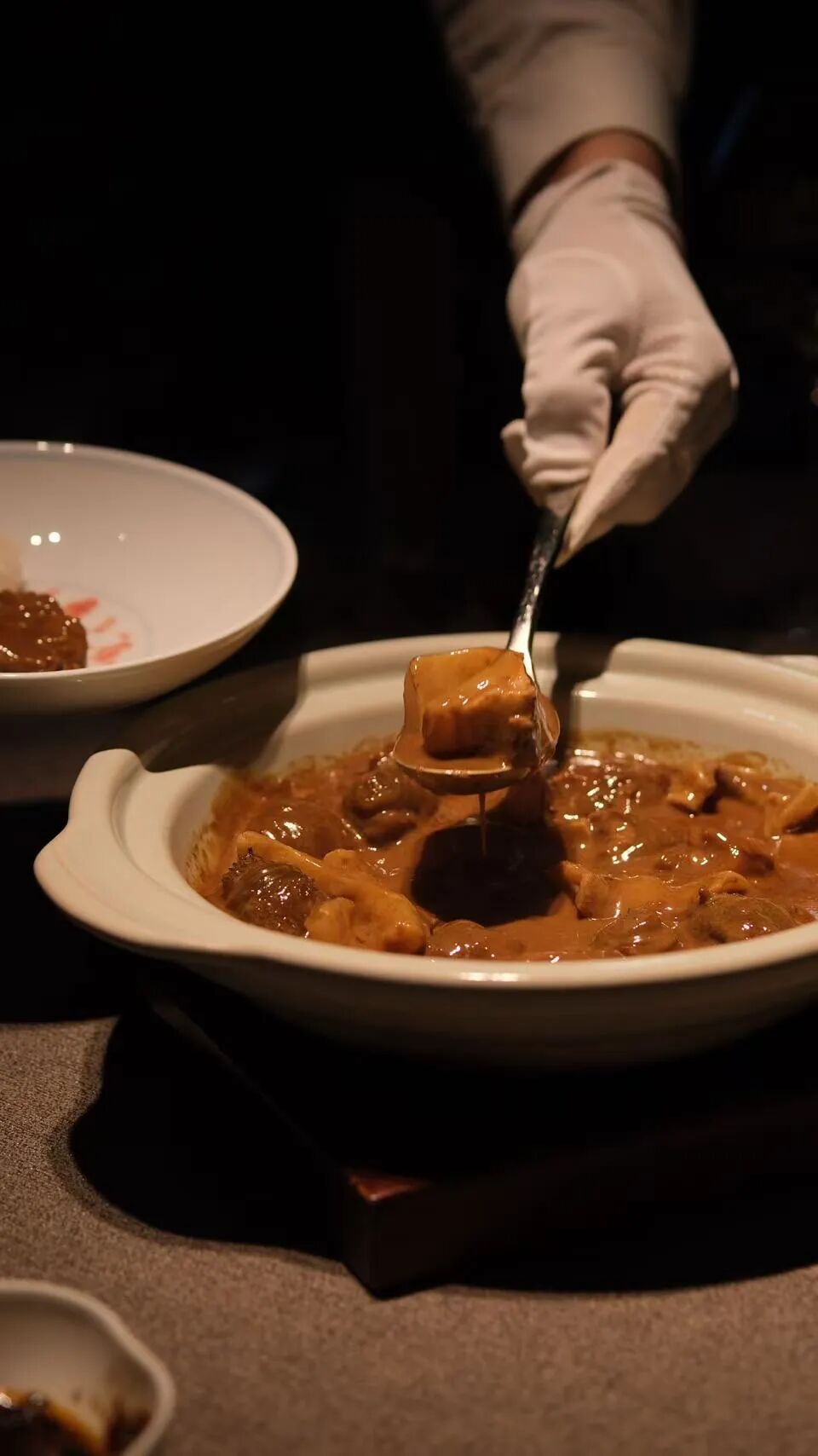 Sea Anemone and Fish Maw
Sea Anemone and Fish Maw
Finally, the climactic Steamed Egg with Mapo Tofu and Shrimp Meat, Roe, and Brain, a bold umami explosion. Tofu from Taizhou, simmered shrimp heads, and shrimp oil were blended with the egg, then steamed into a silky custard. Every spoonful revealed layers of shrimp sweetness, spicy tofu, and rich egg texture, a masterful finale.
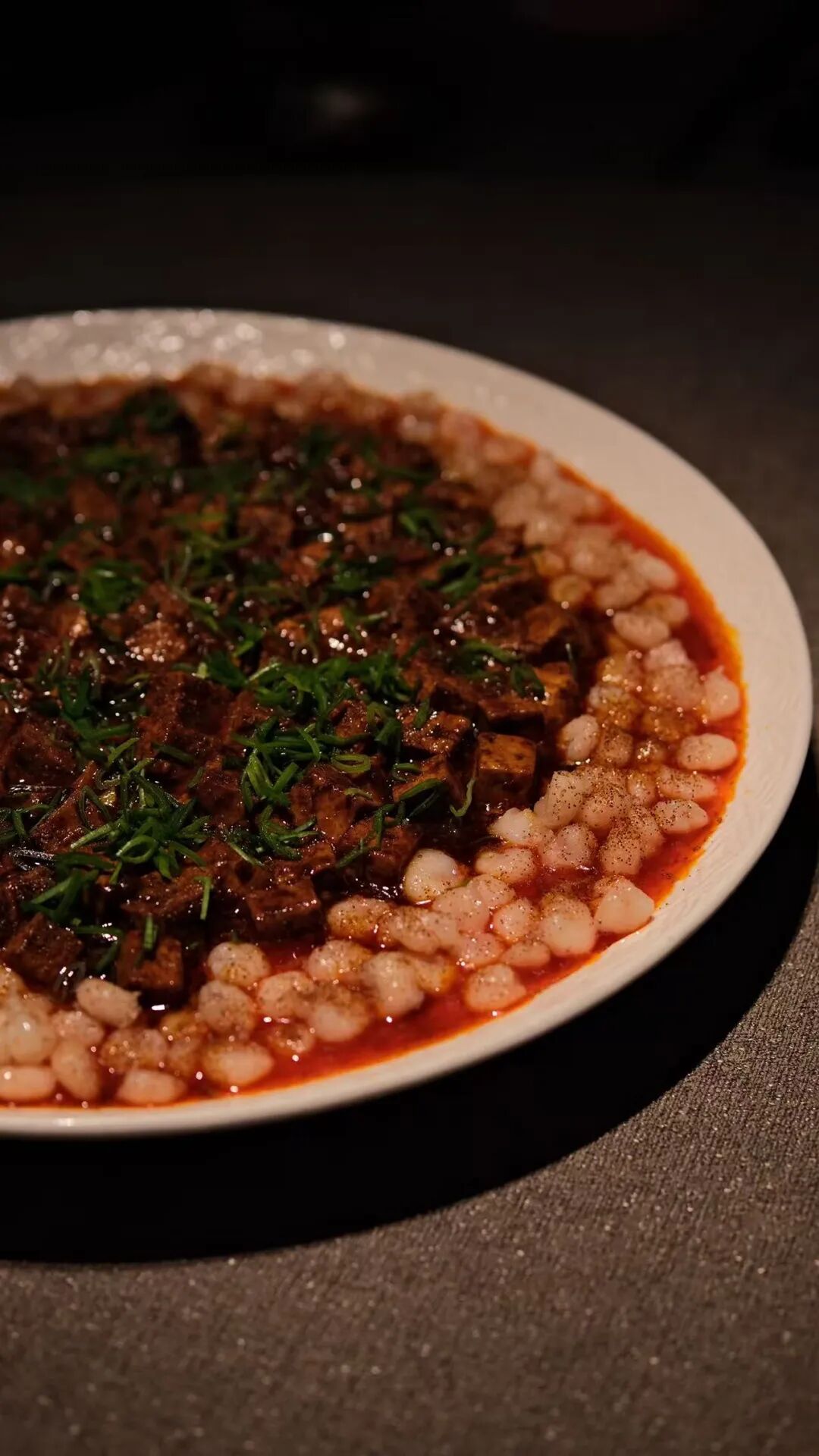 Steamed Egg with Mapo Tofu and Shrimp Meat, Roe, and Brain
Steamed Egg with Mapo Tofu and Shrimp Meat, Roe, and Brain
After a scoop of sesame ice cream, the evening concluded. Oriental House’s off-menu experience always pushes the boundaries of taste and indulgence.
This year was fully booked, so mark your calendars for next year!
*At the time of publication, 2025 reservations are completely booked. Reservations for the coming year will open in December. For inquiries, please contact Zui Dong at the 96 Plaza location.
Author: Jocelyn 华姐
Text assistance and editing: Lia Shangguan
Photos: Jocelyn 华姐/Patty Chuang


